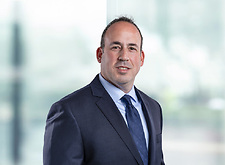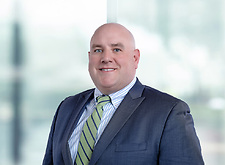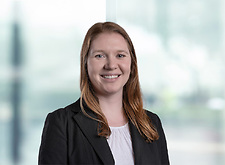Top 10 Things to Know About New York State’s New Proposed Large-Scale Renewable Project Siting Regulations
Yesterday, September 16, 2020, the newly created Office of Renewable Energy Siting (“ORES”) issued the much-anticipated proposed regulations implementing New York State’s new large-scale renewable energy permitting process.[1] The proposed regulations represent significant progress regarding implementing the details of that improved process, setting out application requirements and uniform standards and conditions for designing, engineering, and operating new major renewable energy facilities in the State. The full text of the regulations are available here: (procedural requirements) and here: (uniform standards and conditions). The regulations are required by the Accelerated Renewable Energy Growth and Community Benefit Act (the “Act”) – the law passed April 2, 2020 that established the new “Section 94-c” permitting process as the successor to the Article 10 siting process. We wrote about the Act and the new siting process in our previous client alert found here. As Anne Reynolds, executive director of The Alliance for Clean Energy – New York (“ACE-NY”) stated when the law was enacted, “This bill . . . improves the process and will hopefully get people to work, building wind and solar projects.” And Julie Tighe, president of the New York League of Conservation Voters, stated that the legislation “has the potential to significantly reduce the amount of time it takes for developers to build renewables, while also ensuring a rigorous environmental review process and creating green jobs across the state.”
Section 94-c requires that ORES promulgate the rules necessary to implement the streamlined permitting program within one year of the Act’s effective date, which was April 2, 2020. These standards and regulations also operate within the law’s requirements that ORES deem applications complete or not within 60 days of submission; that ORES take comments on the proposed conditions for 60 days after they are issued; and that ORES issue permits within one year of an application being deemed complete, or within six months if the project is sited on “existing or abandoned commercial use,” including brownfields, landfills, dormant electric generating stations, and other abandoned properties.
The proposed standards and regulations, which are in two parts – one regarding application requirements, process at ORES and a series of other details, and another regarding uniform standards and conditions for proposed projects – hit on a broad range of policy and technical issues, representing major improvements to many aspects of Article 10 perceived inefficiencies. However, industry participants will find that the structure of the 94-c permit application is similar to the Article 10 applications, including 25 exhibits addressing various technical, legal and related matters.
Next up, stakeholders and interested parties may submit comments by December 7, 2020,[2] and before any uniform standards and conditions may be adopted, ORES will hold five public hearings across the State to provide a formal opportunity for public input.
Here are the top 10 things we think you should know about the proposed uniform standards and conditions, in no particular order.
- Early stage wetlands delineations are required
Draft wetlands delineation reports are required as part of a project’s pre-application process. Applicants must submit the report to ORES with a copy to the New York State Department of Environmental Conservation (“NYSDEC”). There is no requirement that reports be submitted to ORES within a certain timeframe prior to the submission of a 94-c application. ORES must make a final jurisdictional determination on wetlands delineations within 60 days of submission. If ground conditions prohibit ORES from making a determination within 60 days, ORES will provide the jurisdictional determination as soon as practicable after conditions are suitable. Within that 60 day review period, ORES may request that the NYSDEC conduct a site visit to assist in determining the bounds of regulated wetlands. ORES will consult with DEC in making a final jurisdictional determination. This consultation process will eliminate the sometimes protracted disagreements over resource determinations that can be characteristic of the Article 10 process.
The proposed regulations include uniform standards for mitigating impacts to wetlands. The applicable standards address construction activities in wetlands and adjacent areas, including the degree to which wetland soils may be disturbed and how far certain construction areas must be from environmentally sensitive areas. A complete application must include an analysis of off-site wetlands within 100 feet beyond the limit of disturbance that may be hydrologically or ecologically influenced by the facility. If ORES determines that jurisdictional wetlands are present at the site, the application must demonstrate avoidance of impacts to wetlands and adjacent areas within 100 feet by siting components more than 100 feet from delineated wetlands. All applicants are required to conduct restoration activities in accordance with the approved Wetland Restoration and Mitigation Plan, restore disturbed wetland areas with native vegetation and erosion controls, and monitor vegetative cover for a minimum of 5 years. The 94-c regulations do not impact U.S. Army Corps of Engineers requirements or the permitting requirements of any federal agency. - Extensive ambient noise studies are not required
The uniform noise standards for solar projects are significantly less restrictive than what has been required under Article 10, and resolve a number of contentious issues presented to the Siting Board under the Article 10 process. Applicants are no longer required to conduct extensive ambient noise measurements for these projects. A complete application must include the noise and vibration models specified in the regulations, thereby eliminating the repeated objections and litigation over which is the proper model. Sound surveys are required to be conducted over a minimum of 4 days for solar facilities and 7 days for wind facilities. The noise standards for solar facilities are achieved by the applicant’s implementation of approved design standards.
Noise limits for wind are consistent with conditions set in Article 10 permits. Wind facilities must comply with a maximum noise limit of 45 dBA (8-hour) outside any non-participating residence and 55 dBA (8) hour outside any participating residence that exists when the siting permit is issued. Additional noise limits are set based on distance to non-participating residences and their proximity to collector substation equipment. Post-construction noise testing is required within 7 months and 13 months of commercial operation (once during the “leaf-off” and once during the “leaf-on” season). - Pre-application meetings with municipalities must be documented
As part of the application, applicants are required to submit transcripts, if any, of meetings with the local municipality, presentation materials provided to the municipality and community members, and a summary of questions received throughout the pre-application meetings with responses. This will require the applicant to maintain a record of questions received throughout the pre-application process. If an applicant is unable to secure a meeting with the municipality, which is required no less than 60 days prior to the submission of a 94-c application, the application must contain a detailed explanation of the applicant’s efforts to secure that meeting. - Uniform setbacks for solar and wind must be reflected in design drawings
The uniform standards and conditions include setbacks for all solar and wind facilities, respectively. The uniform setbacks for solar facilities are measured from non-participating residential property lines, the centerline of public roads, non-participating property lines (non-residential), and non-participating occupied residences. Applicants of solar facilities must demonstrate compliance with the setback requirements in their design drawings. Fencing, collection lines, access roads, and landscaping may occur within the setback.
The setback requirements for wind facilities are measured from the total height of the wind facility from base to maximum blade tip height. Wind facilities must meet the specified setbacks or the manufacturer’s setbacks, whichever are more stringent. Setbacks for wind are measured from substations; any above-ground bulk electric system; gas wells (unless waived by the landowner and the well operator); public roads; property lines; non-participating, non-residential structures; and non-participating residences. Along with the required design drawings, applicants of both solar and wind facilities must submit site plans that illustrate any applicable local setbacks. - Emphasis on early identification of New York State-listed species and their habitats
The proposed regulations contain uniform conditions for mitigating impacts to New York State-listed species throughout the siting and project development process. At the pre-application stage, the applicant is required to conduct a wildlife site characterization study to identify New York State-listed threatened, endangered, or special concern species. Based on the results of the characterization and meetings with the ORES and the NYSDEC, the applicant may be required to prepare habitat assessments and/or conduct site surveys. The ORES, in consultation with NYSDEC, will review the results and identify areas of occupied habitat within the facility site. The agencies and the applicant will meet to discuss the requirements for a Net Conservation Benefit Plan (NCBP), if applicable.
The applicant will then provide, as part of the application, an approved wildlife site characterization report, habitat assessment, and/or survey reports, as well as any required NCBPs. The requirements for NCBPs depend on what species will be impacted by the facility. For New York State threatened or endangered species other than grassland birds and their habitat, the NCBP must, among other things, demonstrate that the NCBP results in a positive benefit on each affected species. If physical mitigation will be performed under the NCBP, the applicant must indicate their financial and technical capability and commitment to fund the mitigation for the life of the facility or term of the permit. If an active nest is identified within the facility site and the facility results in adverse impacts to 25 acres or more of grasslands determined to be occupied habitat, the applicant must coordinate with the NYSDPS and ORES to adjust the limits of disturbance and/or construction schedule to avoid disturbing the nest. Alternately, the applicant may pay into the Endangered and Threatened Species Mitigation Bank Fund (the “Fund”) in an amount commensurate with the amount of actual acreage taken. If the facility will have more than a de minimis impact on grassland birds or their habitat, the applicant cannot satisfy their mitigation requirements solely by making a payment to the fund. Instead, applicants must either make a mitigation payment to the Fund in addition to the required avoidance and minimization measures, or propose a NCBP that includes grassland bird habitat conservation measures the applicant will implement. No facility may be constructed within 150 feet of any known northern long-eared bat maternity roost, 500 feet of any known Indiana bat maternity roost, or a quarter of a mile from any known northern long-eared bat or Indiana bat hibernaculum.
The uniform conditions addressing mitigation of impacts to New York State-listed species are applicable throughout all stages of the siting and permitting process – from pre-application study and consultation to post-construction monitoring and reporting. The uniform conditions remain effective for as long as the relevant species is listed as endangered or threatened in New York State. - No separate Incidental Take Permits are required from DEC
Applicants are not required to seek a separate Incidental Take Permit from the NYSDEC for project impacts to endangered and threatened species. ORES will coordinate with the NYSDEC to incorporate any conditions that would otherwise be required under an Incidental Take Permit for the project into the 94-c permit conditions. For each applicable NCBP, the applicant is required to make a payment to the Fund commensurate with the anticipated number of individuals taken, with the “sole purpose to achieve a net conservation benefit to the impacted species.” - Transmission that is not subject to Article VII is now within the jurisdiction of ORES
The Act effectively gives ORES jurisdiction over transmission projects that do not fall under the Article VII process. The definition of “major renewable energy facility” includes “electric transmission facilities less than ten miles in length in order to provide access to load and to integrate such facilities into the state’s bulk electric transmission system.” The proposed regulations further specify that such transmission facilities must be less than 125 kV. Article VII applies to electric transmission facilities 100 kV or more extending for at least ten miles, or 125 kV and over, extending a distance of a mile or more. This means that certain smaller transmission projects that would otherwise be subject to local permitting requirements are no longer within the permitting jurisdiction of the municipality. Municipalities will retain jurisdiction over 100 kV transmission lines less than 10 miles in length. - A complete application requires semi-mature design drawings
A complete application will require semi-mature design drawings. This means that the level of detail required for the application may not be known early on in the project development process. Some components of the design drawings may be preliminary or reflect estimates of proposed locations, such as approximate limits of disturbance, proposed access road travel lanes, and for wind facilities, the proposed wind turbine setbacks (based on the tallest proposed turbine model being considered) and the approximate dimensions of foundations and crane pads. Other components of the design drawings require greater development design maturity – such as dimensions and materials of facility components, cross sections and side views of proposed permanent access points, and underground infrastructure circuit layouts. - Agricultural mitigation is limited to impacts to “active agricultural lands” within specified soil classes
The proposed regulations include uniform conditions for solar facilities that propose to permanently or temporarily impact “active agricultural lands” within New York State Agricultural Land Classified Mineral Soil Groups 1 through 4. The proposed regulations define active agriculture production” as “active three (3) of the last five (5) years.” All 94-c permits for such solar facilities will contain uniform conditions that: (1) the project comply with the New York State Department of Agriculture and Market’s (NYSAGM) guidelines for siting solar in Agricultural Districts, to the maximum extent practicable; and (2) the applicant hire a third-party agricultural monitor. The required environmental monitor may serve as the agricultural monitor if ORES, in consultation with NYSAGM, determines that the environmental monitor is qualified on agricultural issues.
Wind facilities that propose to impact active agricultural lands in the applicable Mineral Soil Groups must construct the facility in accordance with the NYSAGM guidelines for agricultural mitigation for wind power projects, to the maximum extent practicable, and are also required to obtain an agricultural monitor or an environmental monitor that is deemed qualified on agricultural issues.
All 94-c permitted solar project applicants are required to submit an agricultural plan to ORES, who will approve the plan after consultation with NYSAGM. Applicants are not required to separately consult with NYSAGM and will no longer negotiate ad hoc mitigation conditions. This effectively subsumes the Notice of Intent process under Agriculture and Markets Law § 305 into the 94-c application review process. - Treatment of modifications and repairs and timing of applications
The proposed regulations do not apply to normal repairs, maintenance, replacements, non-material modifications and improvements to facilities that occur in the ordinary course of business and do not violate any existing permit or the 94-c permit. The proposed regulations define a “major modification” as “a change to an existing permit standard or condition likely to result in any material increase in any identified environmental impact or significant adverse environmental impact not previously addressed by uniform site-specific standards or conditions or otherwise involves a substantive change to an existing permit standard or condition.” A request for a major modification to an existing permit or an approved compliance filing must be noticed, filed, and served in the same manner as a new 94-c application. A major modification may be subject to an adjudicatory hearing if substantive and significant issues are raised in the public comment period, but such hearing would be limited to only those changes proposed by the permittee for which significant and substantive issues have been identified. The regulations do not expressly address modifications that result in an increase in the nameplate capacity of the facility, but which would not result in a significant environmental impact or violation of a permit condition.
The proposed regulations address three categories of projects: (1) new projects that have not commenced the Article 10 process; (2) early stage Article 10 projects that have submitted a draft Public Involvement Program (PIP) Plan under Article 10 (termed “pending Article 10 facilities”); and (3) projects with a nameplate capacity of at least 20 megawatts (MW) but less than 25 MW that opt-in to the 94-c permitting process (termed “opt-in facilities”). All new projects will follow the process in the proposed regulations. All pending Article 10 facilities and opt-in facilities must complete a transfer application, presumably to be made available by ORES. Opt-in applicants must submit a written notice to the lead agency conducting the New York State Environmental Quality Review Act review advising of the applicant’s election to be subject to 94-c. Article 10 projects that have received a completeness determination from the Article 10 Siting Board will, upon submission of all required materials, be deemed complete for purposes of their 94-c application, unless ORES determines that the materials filed under Article 10 and the applicant’s transfer application do not demonstrate compliance with the 94-c uniform standards and conditions. Article 10 projects that have not received completeness determinations must submit all exhibits required for a 94-application.
The uniform standards and conditions in the proposed regulations are intended to avoid, minimize, or mitigate the common impacts of solar and wind projects. Instead of negotiating mitigating conditions as required under Article 10, applicants will choose from the menu of conditions in the proposed regulations and evidence their ability to meet those conditions in their application materials. If an applicant and ORES disagree on a proposed term or condition of the draft siting permit, including the uniform standards and conditions, ORES will make a final determination on the term or condition, unless the disagreement rises to the level of an adjudicable issue to be decided by an Administrative Law Judge. The completeness of an application is not an adjudicable issue. “If ORES cannot prepare draft permit conditions based on the record, it will publish a Statement of Intent to Deny, subject to an adjudicatory hearing that may be requested by an applicant.”
The uniform conditions may not mitigate the site-specific impacts that are unique to certain projects. In those instances, ORES may require that the applicant adopt site-specific mitigation. If ORES determines that the uniform conditions and site-specific mitigation are not sufficient to address an impact of the project, ORES may require off-site mitigation, which may include payment to a designated fund in lieu of physical mitigation.
In addition to the comments that may be submitted to the proposed rules until December 7, 2020, interested parties may participate in the public hearings to be held on November 17, 2020 at Jacqueline Vito LoRusso Alumni and Visitor Center at SUNY Buffalo at 5:00 pm; November 18, 2020 at Rochester City Hall at 5:00 pm; November 19, 2020 at the Clayton Opera House in Clayton, New York at 5:00 pm; November 20, 2020 at the McDonough Sports Complex at Hudson Valley Community College at 5:00 pm; and November 23, 2020 at the Suffolk County Legislature in Smithtown, New York at 5:00 pm. Pre-registration is required for the in-person hearings by email to General@Ores.ny.gov by 5:00 pm on November 13, 2020. A verbatim transcript of the hearings will be made for inclusion in the record. Virtual public hearings will also be held on November 24, 2020 and November 30, 2020 at 5:00 pm. Participants who wish to provide a statement at the virtual hearing must register by November 20, 2020 via the web conferencing information provided in the State Register.
At the close of the public comment period, ORES will consider all comments and issue a final rule. The final rules will include an effective date after which all applications must conform. Until the final rule is issued, all applications must conform substantially to an Article 10 application – with respect to which these proposed regulations provide a reliable roadmap.
[1] For the Notice of Proposed Rulemakings, which include a summary of the regulations, various impact analyses, and information on the scheduled public hearings, see Department of State, Notice of Proposed Rulemaking, “Siting Permits for Major Renewable Energy Facilities,” New York State Register (Sept. 16, 2020), pg. 17-19; Department of State, Notice of Proposed Rulemaking, “Siting of Major Renewable Energy Facilities,” New York State Register (Sept. 16, 2020), pg. 19-22.
[2] Pursuant to the Notice of Proposed Rulemaking, comments will be accepted until 5 days after the last scheduled public hearing. The last scheduled hearing is November 30, 2020, but may be rescheduled as necessary. Changes to the public meeting schedule will be posted on the ORES website: https://dps.ny.gov/ores.
[3] “The permittee shall implement any impact avoidance, minimization and/or mitigation measures identified in the exhibits, compliance filings and/or contained in a specific plan required under this Part 900, as approved by the Office.” 19 NYCRR § 900-6.1(a).
[4] Executive Law § 94-c(3)(e).
Further analysis of the process and requirements of the proposed Section 94- regulations will be forthcoming from Hodgson Russ. If you have questions about the proposed regulations, the rulemaking process or renewable energy projects generally, please contact Daniel Spitzer (716.848.1420), John Dax (518-433-2414) or a member of our Renewable Energy Practice.
If you received this alert from a third party or from visiting our website, and would like to be added to our Renewable Energy alert mailing list or any other of our mailing lists, please visit us here.
Featured
- Partner
- Partner
- Partner
- Partner
- Partner
- Partner
- Partner
- Partner
- Partner
- Senior Associate
- Partner
- Partner
- Co-Chair of the Firm, Partner
- Partner














